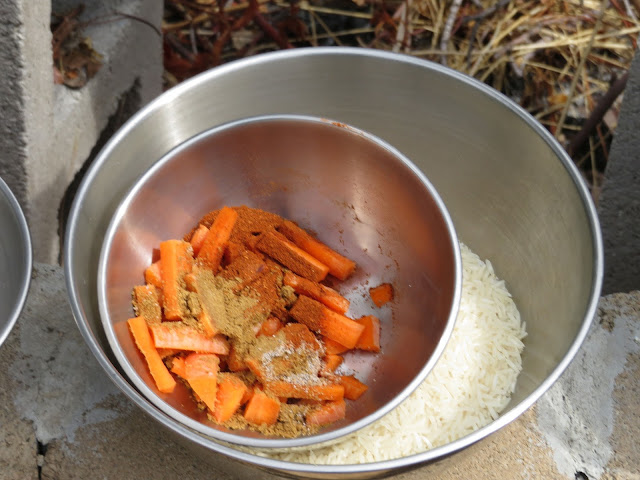We planted four varieties: Early Girl, some sort of beefsteak, Supersweet 100 cherry, and Old German. These last ones are supposed to get pretty big but none of them did; I plan on putting in more of them next year in the sunny spot of the yard and hope we'll get big ones. I like their flavor and their yellow color (tinged with red).
Some pictures:
 |
| The still-ripening big ones, and the ripe ones, sorted out as of yesterday |
 | ||
| The ripe big ones (please excuse my pajamas) |
And of course with Idaho's latest potato crop in, it's also hashbrown time again! I devised an "October Breakfast" of hashbrowns surrounded by fresh homegrown tomato wedges, with a slice of cheese (Havarti) on top.
 |
| My "October Breakfast" - I know it could be fancier, maybe with some radishes and sprigs of herbs. I'll keep working on it. |
I have eaten this several times - one big Russet yields a batch of hashbrowns, so if we bake a few extra then I've got a variety of hot breakfasts for a week (along with grits and Scottish oatmeal - ground at home on the Corona mill).
This isn't even mentioning all the apples we've got from our untended old tree: a box still in the garage and almost a gallon of applesauce in the fridge - just puree these apples and they make a wonderful sauce, no need to add sweetener or anything else!
Here's wishing everyone a spooky scary Halloween! Snake's Knees and Ratchafratch!




















